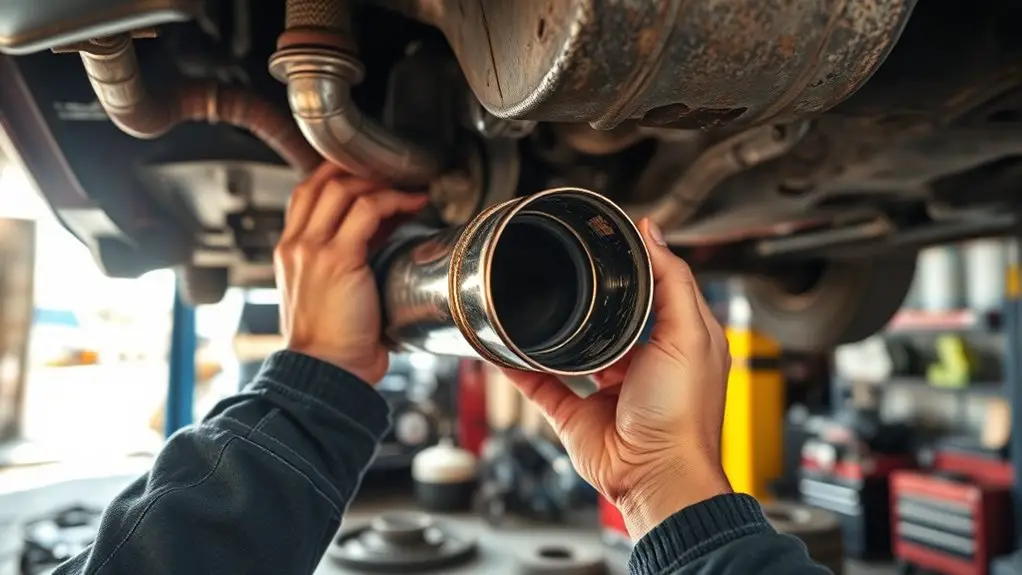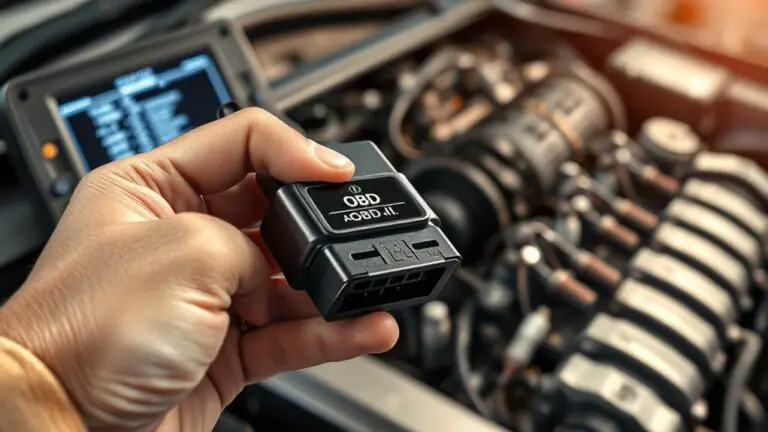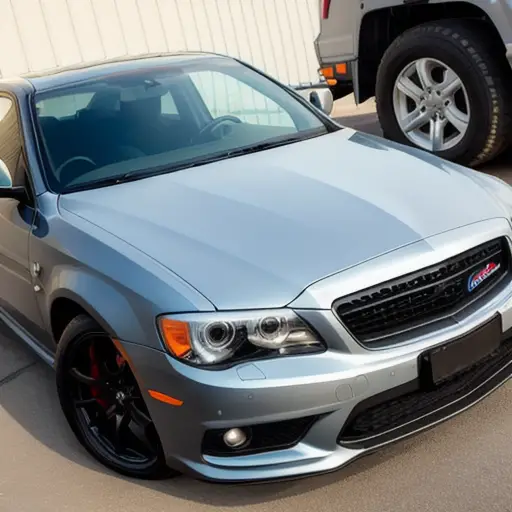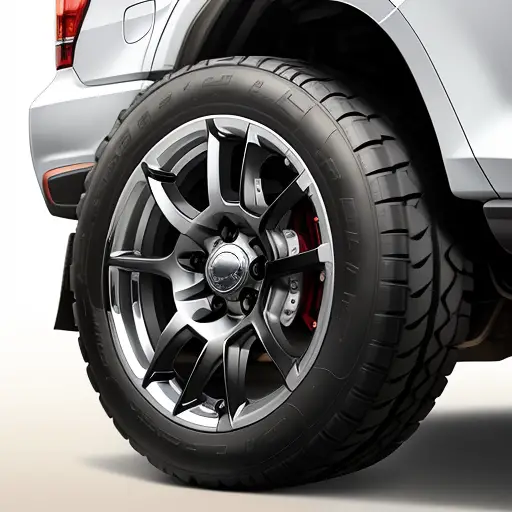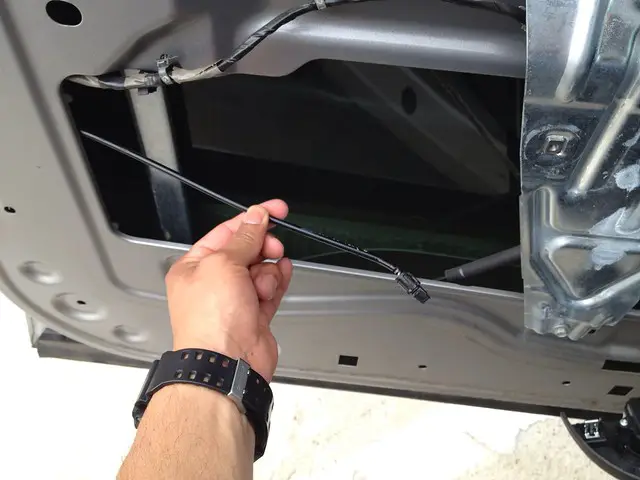Case Guide: Restoring Emissions Compliance After Bad Muffler
To restore emissions compliance after a bad muffler, start with a symptom-driven diagnosis that maps intake-to-exhaust flow, checking for loud operation, backfires, rough idle, and visible soot. Inspect muffler integrity (baffles, perforations, corrosion) and mounting seals. Verify regulatory standards, required test type, and documentation needs. Decide if DIY repairs are feasible or if compliant replacement parts are needed, ensuring fit, torque, and sensor compatibility. Document every repair with part numbers, codes, and test results; next steps will guide you further.
Diagnosing Muffler-Related Emissions Issues

Diagnosing Muffler-Related Emissions Issues: To pinpoint muffler-driven emissions concerns, start with a clear failure symptom inventory and verify intake-to-exhaust flow paths. You’ll assess for excessive exhaust noise, backfire tendencies, reduced idle stability, and unexpected fuel trims during emissions testing. Inspect the muffler for internal baffles collapse, perforation, or rust that could create leaks or partial redirects, causing abnormal oxygen sensor readings. Map flow paths from intake through the exhaust manifold, catalytic converter, and muffler to confirm there’s no short-circuiting or bypass. Compare current muffler types against OEM recommendations and check for mismatched components that impair backpressure control. Use diagnostic scans to correlate sensor data with observed symptoms, documenting any deviations. Establish a baseline of acceptable pressure differentials and verify that leaks aren’t skewing readings. By focusing on containment, flow integrity, and regulatory-compliant testing procedures, you steer toward precise fixes and a predictable emissions testing outcome.
Understanding Local Emissions Standards and Requirements
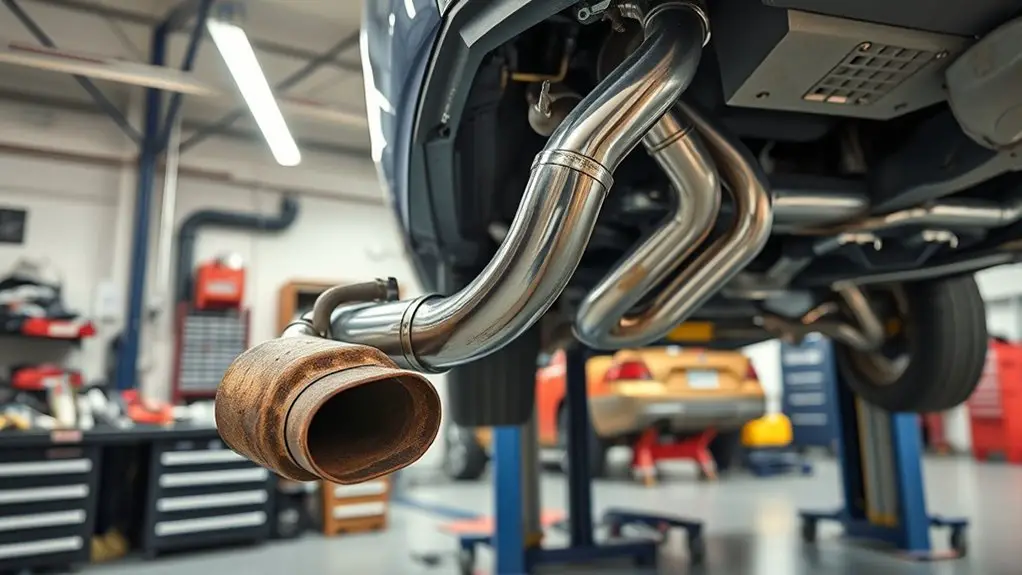
Understanding local emissions standards and requirements is essential to guarantee compliance and avoid penalties; how these rules apply to your vehicle can vary by jurisdiction and vehicle type. You’ll summarize the governing framework by reviewing the applicable statutes, codes, and agency guidance, then map them to your setup. Local regulations typically specify acceptable emission thresholds, testing windows, and documentation needs, so you can anticipate the checkpoints you’ll face. Emissions testing is central: confirm test type (OBDII, dyno, or tailpipe), schedule, and pass/fail criteria before you submit for approval. Keep in mind exemptions, decal requirements, and periodic renewal timing that affect maintenance timelines and recordkeeping. Documentation should be organized, transparent, and readily retrievable to support compliance demonstrations. Align your remediation plan with known standards, document changes, and prepare for possible retesting. This mindset helps you regain freedom through rule-abiding operation while minimizing downtime and surprises.
Assessing When DIY Repairs Are Feasible
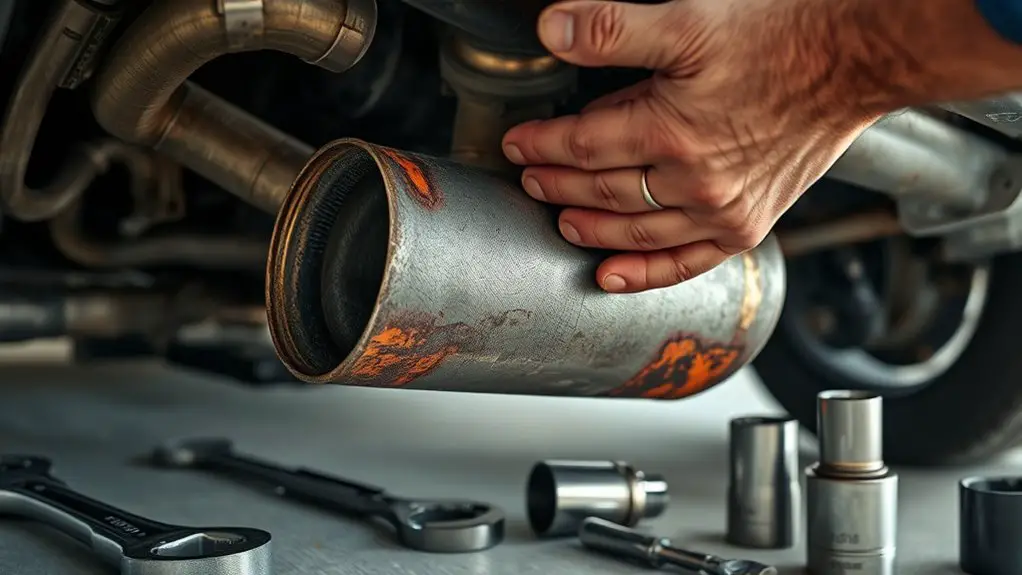
Evaluating DIY repair feasibility requires you to verify that the issue and required actions align with regulatory limits and manufacturer guidance. You’ll perform a safety and tools check, confirm tool availability and competency, and document any constraints that may necessitate professional service. By focusing on DIY repair viability, you’ll determine when repairs can be safely completed in-house versus when external support is required.
DIY Repair Viability
When DIY repairs are contemplated for emissions compliance issues, the decision hinges on technical feasibility, regulatory allowances, and the risk of non-compliance penalties. You’ll evaluate muffler types for compatibility, material limits, and welding or seal integrity, then map these to emissions testing requirements. If the path relies on undocumented modifications or bypasses, forego it: penalties and rework costs wash out any savings. Favor repair strategies that restore original performance curves and meet applicable standards, supported by manufacturer guidance or jurisdictional test criteria. Documented, traceable work with verifiable parts generally sustains compliance more reliably than expedients. If you’re uncertain about test outcomes or retrofit legitimacy, pursue professional assessment to avoid voided warranties or legal exposure. Freedom in approach comes with disciplined, compliant execution.
Safety and Tools Check
With the backdrop of emissions compliance considerations, you’ll pair a practical safety assessment with the tools and procedures needed for DIY repairs. Before you jump in, perform a formal risk check: verify wrench access, electrical grounding, and hot-surface avoidance, then confirm local regulations for DIY exhaust work. Assess failure modes that would require professional service, such as structural rust or catalytic system tampering. Make certain you have proper safety equipment, including eye and respiratory protection, gloves, and hearing protection, and confirm fit-for-purpose PPE for the job. Evaluate tool maintenance: verify torque specs, inspect sockets and wrenches for wear, and test power tools in a controlled area. Only proceed if risks are manageable and documented, with clear rollback steps if uncertainty arises.
Selecting Compliant Replacement Components
You should start by confirming that any replacement components meet the Compliant Part Criteria, including documented fitment and certification. Guarantee each part bears verifiable credentials for the applicable regulatory standard and is compatible with OEM specifications to avoid non-compliance or performance gaps. This sets a precise baseline for selecting compliant components and guides the subsequent validation steps.
Compliant Part Criteria
Selecting compliant replacement components is essential to restore emissions compliance while maintaining system performance and regulatory alignment. You’ll assess part criteria against verified standards, focusing on material composition, durability, and compatibility with your exhaust system. Prioritize compliant materials that meet applicable emissions certifications and environmental rules, ensuring the component won’t introduce backpressure anomalies or thermal stress. Verify that the substitution maintains sensor interfaces, mounting geometry, and mounting torque requirements to avoid unintended fault codes. Document provenance, batch traces, and any aftermarket labeling claims to support traceability. Cross-check the component’s testing data, life cycle, and failure modes with your vehicle’s operating profile. Choose parts that demonstrate consistent performance under real-world conditions while preserving warranty and compliance obligations. Clear sourcing, rigorous validation, and regulatory awareness drive freedom through responsible design.
Fitment and Certification
From compliant sourcing to verified fit, guarantee replacement components match the engine and exhaust system’s interfaces, mounting geometry, and torque specifications while meeting applicable emissions certifications.
- fitment factors: confirm mounting points, flange patterns, and hose connections align with OEM designs to prevent leaks and fitment failures.
- certification process: verify part numbers, traceability, and conformity to relevant standards before installation.
- regulatory awareness: confirm regional and model-year requirements to avoid noncompliant substitutions.
- solution-focused: document measurements, test fit, and post-install checks to validate durability and emissions integrity.
You should rely on manufacturer data, third-party testing where applicable, and precise torque specs to maintain performance, reliability, and freedom from regulatory risk.
Documenting Repairs for Emissions Inspection
When documenting repairs for an emissions inspection, start with a clear, itemized record that links each repair to the applicable regulation and testing standard. You should present dates, vehicle identifiers, test results before and after, parts replaced, and the exact methods used. Attach OEM part numbers, warranty terms, and technician initials to each entry to guarantee traceability. Emphasize the rationale for each repair, demonstrating how the action aligns with acceptable performance thresholds and regulatory criteria. Maintain an unambiguous narrative that supports the emissions records with objective data, measurements, and calibrated test results. Include any diagnostic codes and recheck procedures performed to confirm compliance. Confirm signatures and timestamps validate the documentation’s integrity. Keep the format consistent across all documents to facilitate audits and quick verification by inspectors. By prioritizing clarity and completeness, you empower a smoother inspection process while preserving the sense of repair sovereignty that your audience seeks. repair documentation, emissions records.
Navigating Inspection Procedures and Scheduling
Coordinating emissions inspections begins with understanding local timelines, required documentation, and appointment options so you can lock in a compliant window without unnecessary delays. You’ll follow a precise process, minimizing setbacks and aligning with regulatory expectations. This section focuses on the procedural path: how to prepare, schedule, and verify compliance steps before you arrive at the test station.
1) inspection checklist: assemble current vehicle records, repair receipts, and a test-ready vehicle ID; verify last emissions report and any recall notices.
2) scheduling tips: confirm available slots, choose earliest feasible window, and plan buffer time for unruly queues or paperwork gaps.
3) pre-inspection readiness: ascertain system interfaces are functional, verify fuel levels, and check simple fault codes that could delay testing.
4) documentation discipline: carry multiple copies of required forms, authorization letters, and contact numbers for station staff.
This approach delivers procedural clarity, regulatory awareness, and freedom from last‑minute uncertainty.
Real-World Scenarios: Common Muffler Failures and Fixes
Even with compliant components, muffler failures happen in real-world operation, and recognizing them early is crucial for maintaining emissions integrity. In this section, you’ll encounter typical scenarios you may face under field conditions and how to respond without compromising regulatory posture. Common muffler types exhibit distinct failure modes: perforations from road debris, internal baffle collapse, and corrosion-driven leaks that undermine backpressure assumptions. You’ll assess symptoms such as unusual exhaust noise, reduced performance, or visible soot indicating leaks or blockages. For each case, apply precise diagnostic steps: verify mounting integrity, inspect seals and hangers, and confirm substrate condition with noninvasive pressure checks when allowed. Repair techniques range from targeted weld repairs on stainless steel or aluminized steel to selective replacement of sections, or complete muffler replacement if impairment is extensive. Document findings, preserve component provenance, and make certain testing aligns with applicable standards to sustain compliant operation.
Budget-Friendly Strategies to Restore Compliance
Budget-friendly strategies to restore compliance demand a practical, data-driven approach that maximizes regulatory alignment while minimizing downtime and cost. You’ll focus on targeted actions that deliver verifiable results within emissions testing windows, avoiding unnecessary work and keeping downtime to a minimum.
1) Prioritize budget repairs with measurable impact, matching fixes to failure codes and test results to guarantee pass likelihood.
2) Leverage approved aftermarket parts only when documentation supports equivalent performance and regulatory acceptance.
3) Schedule emissions testing at ideal intervals, coordinating repairs to minimize repeat testing and fees.
4) Implement a lean maintenance plan that documents parts, procedures, and outcomes for future audits and resale value.
This approach emphasizes repeatable processes, regulatory awareness, and rapid restoration of compliance. You gain clarity by tying each action to test outcomes, guaranteeing you retain freedom to operate without overcommitting resources.
Frequently Asked Questions
How Long Does a Muffler Repair Stay Compliant After Replacement?
A muffler repair stays compliant for as long as it remains properly installed and undamaged, but you should expect ongoing checks. Typically, emissions testing may certify you until next scheduled test or when components wear or fail. You’ll want to track muffler lifespan, protect against leaks, and replace as needed. If a repair passes emissions standards, schedule follow-ups and maintain records, because durability depends on driving, maintenance, and local regulations. Stay proactive and compliant.
Can a Car Fail Emissions Without a Muffler Issue?
Yes, a car can fail emissions without a muffler issue. If your exhaust system leaks, burns rich, or fails durability tests, regulators spot violations even with an intact muffler. You should prioritize muffler maintenance and inspect the entire exhaust system for leaks, catalytic efficiency, and sensors. Addressing these promptly reduces risk, keeps compliance, and preserves your freedom to drive. Follow regulatory guidance, document repairs, and re-test to certify continuous emissions integrity.
Do Off-Brand Parts Affect Emissions Compliance Ratings?
Yes, off-brand, or aftermarket components can affect your emissions compliance ratings if they don’t meet the required standards. You should verify that aftermarket components align with compliance standards before installation. You’ll want documentation, approved part numbers, and emissions testing results to prove conformity. If a mismatch exists, you risk failing tests or incurring penalties. Stay proactive with regulatory awareness, and pursue quality parts that maintain performance while preserving your freedom to drive.
Are There Temporary Fixes Allowed for Inspections?
Temporary solutions are allowed only if they meet the inspection guidelines and manufacturer specs; you must follow authorized methods, not improvised fixes. You’ll want documented, compliant adjustments that restore functional emissions performance without bypassing sensors or monitoring. Stay within regulatory limits, obtain any necessary approvals, and keep records for audits. If in doubt, consult the official inspection guidelines and your authority’s technical bulletin to guarantee you remain compliant while pursuing freedom through lawful, testable repairs.
Is Roadside Testing Recognized for Muffler-Related Failures?
Yes, roadside testing can recognize muffler-related failures under certain roadside inspection programs, but it depends on jurisdiction and program specifics. You should understand roadside regulations and testing accuracy criteria for your area, since results may trigger penalties or remedial steps. If you’re pursuing compliance, prepare documentation, request confirmatory lab tests when possible, and address the root muffler issue promptly. You’ll gain more freedom by meeting standards, not bypassing them.

